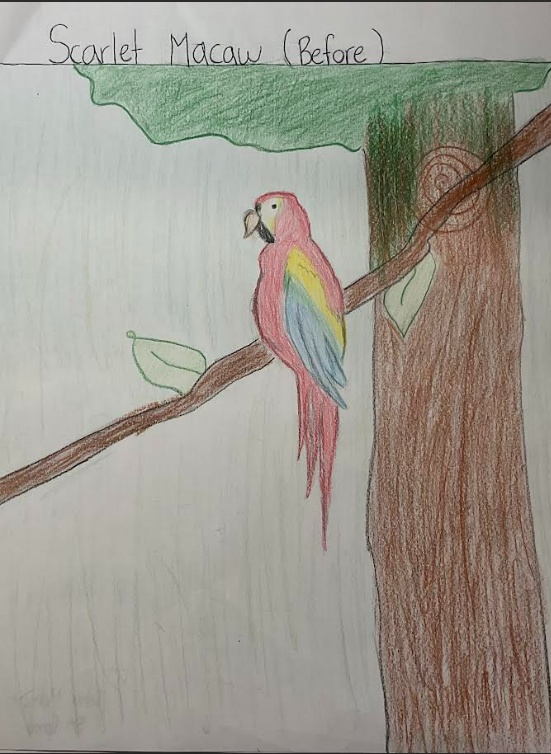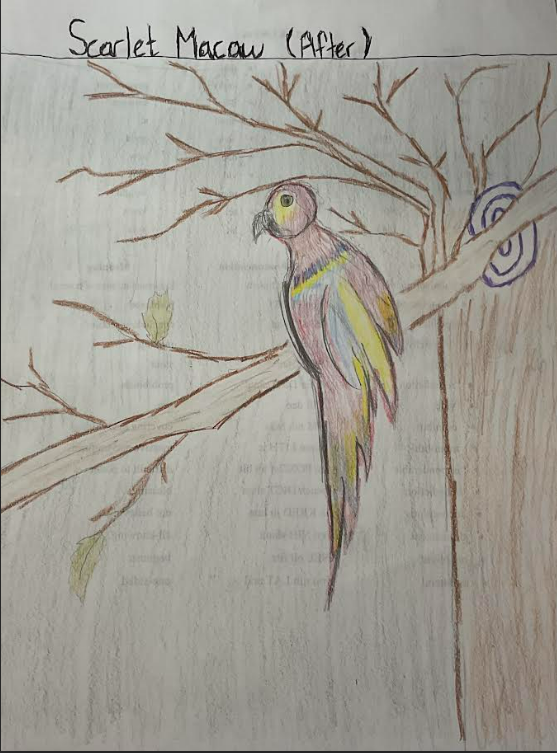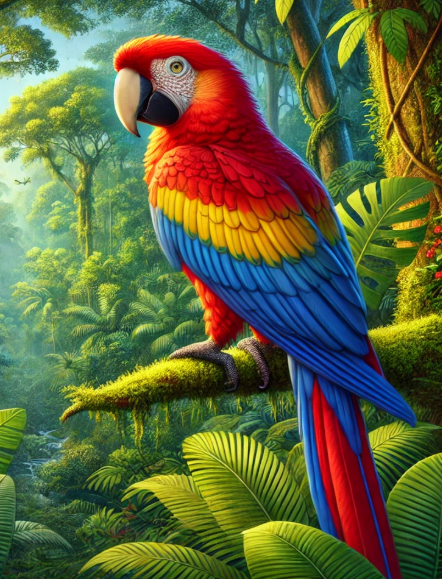The scarlet macaw’s bright red, blue, and yellow feathers blend with the lush, colorful rainforest, aiding in social signaling and mate attraction. Its strong, curved beak is specialized for cracking nuts and seeds from tropical trees. Large wings allow agile flight through dense foliage, while sharp intelligence helps with survival. The warm, humid environment provides abundant food, shelter, and nesting opportunities, shaping the macaw’s striking appearance and highly adapted physical traits.
Driven by climate change, the futuristic macaw has adapted to a hotter, drier rainforest with sparse vegetation. Its once-vibrant feathers have muted for camouflage, blending into the altered landscape. A longer, more robust beak allows it to process tougher, drought-resistant seeds as food sources dwindle. Larger eyes aid nocturnal activity, avoiding extreme daytime heat. A smaller body with elongated wings improves heat dissipation and efficiency, showcasing the macaw’s evolution in response to environmental shifts.
Contact us
Thank you for your interest in contacting Future Engineers. We look forward to connecting with you!
General Inquiries
support@futureengineers.orgSponsorship Inquiries
sponsor@futureengineers.org


